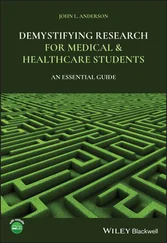3Center for Intelligent Signal and Imaging Research (CISIR), Electrical and Electronics Engineering Department, Universiti Teknologi PETRONAS, Bandar Seri Iskandar, Malaysia
4Computer Science Department, SZABIST, Karachi, Pakistan
5Computer & Information Technology Dept., Dammam Community College, King Fahd University of Petroleum & Minerals, Dhahran, Saudi Arabia
Abstract
Multi-carrier communications (MC) have gained a lot of interest as they have shown better spectral efficiency and provide flexible operation. Thus, the MC are strong candidates for the fifth generation of mobile communications. The Cyclic-prefix orthogonal frequency division multiplexing (CP-OFDM) is the most famous technique in the MC as it is easy to implement. However, the OFDM has poor spectral efficiency due to limited filtering options available. Thus, to enhance spectral efficiency, an alternative to OFDM called Filter bank multicarrier (FBMC) communication was introduced, which has more freedom of filtering options. On the other hand, the FBMC preserves only real orthogonality for the waveforms, resulting in imaginary interference. Hence, the equalization in FBMC has to deal with this additional interference which becomes challenging in multiuser communication. In this chapter, the aim is to deal with this challenge.
Keywords:Multiuser communications, multicarrier communications, OFDM, FBMC, 5G, equalization, machine learning, MMSE
Improved bandwidth, efficient power utilization, and better handling of selective fading are prominent advantages of the MC [1]. The CP-OFDM is a simpler MC solution. However, it has poor spectral efficiency due to limited filtering options available.
Another candidate considered for multiple radio access in 5G is the Filter Bank Multi-Carrier (FBMC) [2]. The FBMC is a modified version of OFDM, where the rectangular transmit and receive waveforms are replaced by any other more frequency localized pulse shapes, which offer a more confined spectrum, relevant for spectrum-sharing scenarios.
In the FBMC with Offset Quadrature Amplitude Modulation (OQAM) system, Channel equalization is challenging compared to the standard CP-OFDM. This is because the real and the imaginary symbols in the FBMC-OQAM system are transmitted with a time offset, which results in loss of orthogonality in the imaginary part [2]. Thus, the received signal suffers from the additional imaginary part, which is termed as Imaginary interference. This interference degrades the performance of the channel estimator. As a result, channel equalization also degrades as it requires the knowledge of channel estimates. In conventional equalization methods for the FBMC-OQAM, the channel estimates are used to cancel the phase of the received signal and extract its real part. However, due to errors in channel estimates, the phase cancellation is not completely achieved. Thus, this conventional approach does not work in this scenario. Alternatively, people have proposed direct equalization methods, which still need improvements. Therefore, there is a need to design an efficient equalization method to combat the imaginary interference and inter-symbol interference (ISI), and inter-carrier interference (ICI) in the FBMC-OQAM system.
1.2 Related Literature Review
The FBMC modulation is a recent type of MC technique developed to improve the performance of the conventional OFDM by minimizing ISI and ICI [1, 2].
The FBMC-OQAM has been considered a strong candidate for 5G due to its better spectral efficiency in terms of out-of-band (OOB) emission in contrast to the conventional OFDM. On the other hand, the FBMC-OQAM loses orthogonality in the imaginary part due to offset transmission scheme, resulting in imaginary interference [2]. Thus, more sophisticated methods are required to deal with channel estimation [3], equalization, and interference cancelation in Multiple-Input and Multiple-Output (MIMO) FBMC implementation [4–6].
The simplest equalization method for the FBMC system is the one-tap equalizer which has shown better performance in the absence of ISI and ICI [7]. However, its performance severely degrades in the presence of selective channels, particularly for high Signal-to-Noise Ratio (SNR) scenarios.
The existing solutions for equalization in the FBMC system commonly assumed that the channel is time-invariant [8–12]. The equalization method in [8] developed a parallel architecture using Fast Fourier Transform (FFT) blocks for the equalization. Another method based on larger FFT was proposed in [10]. In [11], a Minimum Mean Squared Error (MMSE) criteria-based equalization technique was developed, which was later modified in [12] to the MIMO scenario. In [13], a spatio-temporal structure based n-tap MMSE equalizer was introduced for the FBMC systems.
The authors in [14] have given evidence that the MMSE equalizer for the FBMC has robustness property in the presence of a time-varying channel.
In [15], the authors have reformulated the multicarrier equalization problem as single carrier QAM and derived relevant MMSE expression.
In the FBMC-OQAM transmission, various processes are involved, as shown in Figure 1.1.

Figure 1.1FBMC-OQAM transmission system.
It can be seen from Figure 1.1 that the FBMC-OQAM transmitter consists of a first block of bits to symbol mapping, which is followed by a OQAM processing block that modulates the symbols using OQAM mapper. Next, the IFFT is taken after converting data from serial to parallel. Finally, the data is transmitted through the channel by converting it again to serial transmission. The FBMC receiver has reverse processing of transmission blocks, as shown in Figure 1.2.

Figure 1.2FBMC-OQAM reception system.
The transmitted basis pulse for the l th sub-carrier and k th symbol gl, k ( t ) is defined as:
(1.1) 
Where p ( t ) is the prototype filter, F is the subcarrier spacing, and T is symbol spacing in time. The sampling rate is evaluated by fs = 1/∆t = FNFFT , where NFFT ≥ L . Here, NFFT is used to show the FFT size. The sampled basis pulse gl,k(t) , can be expressed as vector gl, k ∈ CN × 1 , given by
(1.2) 
with
Next, by combining all the vectors in a matrix G∈ CN × LK , given by,
(1.3) 
(1.4) 
and by representing the combined data vector for all the transmitted symbols as vector x∈ CLK × 1 ,
Читать дальше


















